Breeds of teacup dogs are adorable and cute, and you don’t have to be a dog person to want to own them. Having said that, they do need responsible owners and loving homes. While they’re popularly known as toy dogs, they are real animals that require attention, care and a comfortable environment.
Table of Contents
A FEW WORDS ABOUT TEACUP DOG BREEDS
The one thing that you should know about teacup is that it doesn’t define a breed per se, instead, it is a term used to refer to miniature dogs. To be precise, a dog that weighs anywhere between 7-14 pounds even upon reaching adulthood is considered to be a small dog.
It is important to note that these miniature dog breeds are completely healthy, and if your take good care of them, they can live up to 12 years.
Here is a quick rundown of all the best teacup dog breeds to help you choose one that suits your nature, circumstances and schedule perfectly.
#1 – BICHON FRISE
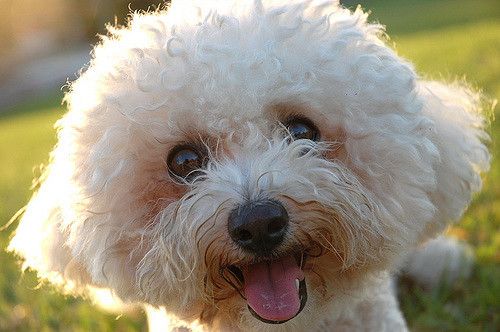
Vital Statistics:
Dog Breed Group: Companion Dogs
Height: 9-11 inches tall
Weight: 8-12 pounds
Life Span: 13-15 years
Personality:
Enthusiasm is the most prominent trait in a Bichon’s personality.
This dog is always cheerful and adores being the center of attention. Being incredibly charming and adept at making friends, he finds it a cakewalk to win hearts all over with his personality.
While the Bichon does have a playful, independent streak, that doesn’t mean that he likes being left alone.
In fact, if left alone for several hours in a row, separation anxiety is bound to develop in this breed.
Bichons are highly intelligent and receptive to strenuous training. This is actually beneficial to the owner, as this breed needs to learn proper canine manners.
Bichons are quick learners, so taking them to obedience training classes can be quite rewarding. They are also well-known for their cute and witty antics and perform laudably in canine sports.
Health:
Bichons are notorious for getting their ears infected and dirty. Therefore, you’ve to make sure that his ears stay clean, otherwise things worsen further, leaving you with an ill dog and costly vet bills.
Consult a groomer to pluck out the hair growing in his ear canal. If you observe accumulation of wax, redness or bad odor, or notice your dog shaking his head and scratching his ears, take him to your vet just to make sure that he doesn’t have a ear infection.
Bichons can be extremely prone to allergies and skin problems. Therefore, it is advisable to steer clear from dog processed food and use only dog cleaning products.
Grooming & Care:
The Bichon Frise is white in color and a dual-coated breed. One of the desirable traits about this breed is that it doesn’t shed. Since it is double-coated, the shed hair is trapped in the undercoat and prevented from falling on the floor or furniture.
As far as grooming is concerned, this is a high-maintenance dog breed. You’ll need to allot plenty of time for grooming and bathing.
In order to keep his white coat shiny and clean, you’ll have to brush him twice a week, and bathe him whenever he gets murky.
Additionally, it is essential to ensure that the coat is devoid of mats or tangles before bathing, otherwise the mats will tighten after bathing and become impossible to remove.
Temperament:
Bichons can be tough to housebreak. Therefore, crate training is recommended as soon as the puppy reaches 6 months of age.
Also, this is one of those tiny puppy breeds that are really tiny and fragile. Therefore, they should be handled by children only during careful adult supervision.
Because Bichons are so cute and tiny, their owners are often tempted to overprotect them. Now this can be a big mistake and lead to the dog becoming spoilt, shy, and nervous of strangers. It is fine to be cautious of dangerous situations, but at the same time, it is also important to teach him to be confident. As they say “Some things are best left to Nature”.
Pro Tip: Never buy Bichon yorkie puppies from a puppy mill or an irresponsible breeder. Always consider a reputable breeder who breeds the dogs in suitable conditions and makes sure that they’re free of genetic diseases that may pass on to the different breeds of teacup puppies.
#2 – CHIHUAHUA
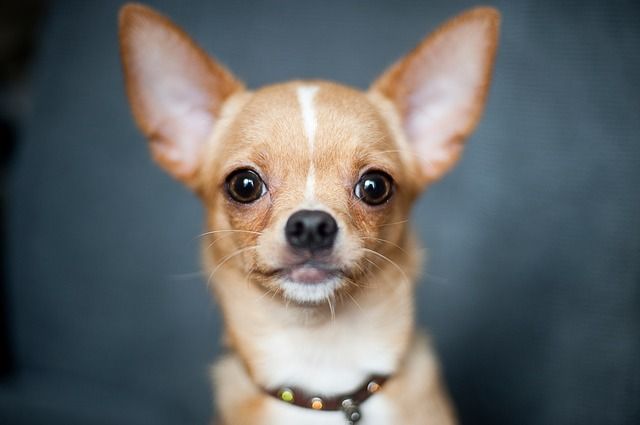
Vital Statistics:
Dog Breed Group: Companion Dogs
Height: 6-9 inches
Weight: 3-6 pounds
Life Span: 10-18 years
Personality
Chihuahuas are one of the smallest teacup dog breeds. They are tiny dogs with a large heart. Ever ready to be your bodyguard, a fierce love for their owners qualify them as wonderful watchdogs.
One thing that you should know about this particular breed is that although showroom dogs weigh around 6 pounds, those kept at pet stores weigh up to 10 pounds. When it comes to socializing with others of their kin, chihuahuas are a bit timid. However, their shyness dissipates after subsequent meetings and they can turn aggressive soon after.
Chihuahuas are among those teacup dogs that stay small even after reaching the adult stage.
They’re fast learners so multiple training sessions of 15 minutes daily are sufficient with this breed. They are extremely loyal and look up to their owners with undying devotion.
As a result, they do tend to overprotective. While this behavior is cute, it should be discouraged to preclude future accidents.
Grooming & Care
Chihuahuas require regular grooming and brushing, else the coat can become matted and dirty.
They shed hair in small clumps, and twice a year-in spring and in fall. However, regular brushing can keep excessive shedding in control. This breed doesn’t require a bath every week. In fact, with frequent brushing, it is even possible to restrict bathing to once or twice a month.
Nail trimming is an integral part of the grooming process and the earlier the dog is introduced to this, the less stressful the experience will be. Overgrown nails may be understood if a typical clicking sound appears while the Chihuahua walks around.
Dental care is an essential regimen too, as up to 1 million chihuahuas die every year from poor dental health. It is important for owners to brush their teeth at least twice every week. This keeps bacteria and tartar at bay.
Since these pets are cold-sensitive, they need a sweater for outdoor activities and long walks.
Health
There are several health hazards that can shorten the life of a Chihuahua.
Joint aches are common with this breed, as are hypoglycemia and lack of energy. Since they have frail bodies, they cannot regulate the blood sugar levels correctly.
Uncontrolled shivering is also of common occurrence. Patellar luxation, Perthes syndrome and hip dysplasia are painful joint conditions that often require surgical intervention for cure.
With regular visits to the vet, it may be possible to identify such problems at an earlier stage and nip them in the bud before they get too serious.
Temperament
Behind that small size and shy demeanor of a Chihuahua lies a massive Napolean complex, that prevents it from acknowledging the dominance of larger dogs.
The presence of hyperactive pets in the house can cause a Chihuahua to indulge in destructive chewing, and bark incessantly. These are also common behavioral traits in a dog that is separated from their owner for prolonged periods of time. In such a situation, anything from potted houseplants to tablecloths can become their route to relieve anxiety.
Their immense love for their owner can cause them to get aggressive with small children. Therefore, they aren’t the best dogs to have around children. Additionally, they are fussy eaters. This means that it is important to establish certain ground rules.
#3 – MALTESE

Vital Statistics:
Dog Breed Group: Companion Dogs
Height: 8-10 inches
Weight: Up to 7 pounds
Life Span: 12-15 years
Personality
A breed that is docile and fearless, the Maltese greets everyone with a nice wag of his tiny tail. His glamorous white coat lends him the look of a haughty nobility, but looks, after all, can be deceiving!
This is a spirited and loving dog who excels not only as a charming companion but also as a therapy pet and competitor in canine sports like rally and tracking.
The Maltese has a lively personality and because he is so people-oriented, it is not tough to train him.
Additionally, he responds well to positive reinforcements like treats, praise, petting and play.
This breed has a natural knack for getting their way, even with people who have no aim of spoiling them.
Grooming & Care
The Maltese coat is white, smooth, and straight. They don’t have the undercoat usual to other breeds and don’t shed much.
On the downside, Maltese coats tangle frequently and get quite messy. What’s more, Maltese are inclined to get unattractive tear stains on their faces.
Brush the coat of your Maltese regularly. This avoids tangles and keep him clean. Lovely however they might be, Maltese can get messy effortlessly and thus should be showered at least once a week.
You should check your Maltese’s ears once every week. In the event that they appear to be sensitive or have a terrible smell, take him to the vet for a checkup. Additionally, Maltese grow a great deal of hair in their ears. This hair is unwanted and should be uprooted.
Tear and face stains are common issues for Maltese owners. You need to know that tear staining will start when your puppy is four to five months old (that is the age when their permanent teeth are coming in).
To reduce face-staining of your grown-up Maltese, follow these steps:
- Clean his eyes everyday with warm water to preclude tear stains, and wash your Maltese’s facial hair after dinners.
- Train him to sip water from a bottle. Remember, water that has high in minerals can bring about face-staining, so consider buying purified filtered water for your Maltese.
- Encourage your Maltese to feed from a stainless steel, clay, or glass dish, not a plastic one. Also, wash your puppy’s dish between feedings
Maltese love regular walks and brief play sessions in the sun. This is one dog breed that remains active up to old age. Because they are so active outdoors and delicate in structure, it doesn’t take much effort to keep them healthy and fit.
Maltese puppies less than 8 months old should not be subjected to rigorous exercises, as his bones haven’t developed fully at this age. Being house dogs mostly, they do not tolerate extremes of temperature very well.
Pro Tip: It is common to face the perplexing question, “where can I buy a teacup maltese puppy?“. It is recommended to buy tea cup maltese from a certified breeder only.
Health
A typical health issue is hypoglycemia, which arises due to aberrant control of blood glucose levels. Joint issues additionally happen as often as possible. Luxation patella is a condition that impacts the knee, causing it to get displaced. Dynamic Retinal Atrophy is an infection situated in the eye and prompts visual deficiency. This is hereditary and, sadly, there is no real treatment.
Liver shunt is a condition common to this breed. Whenever you see side effects like inability to walk or lethargy, you should take him to the vet quickly. The teeth and gums can be delicate too, so cleaning is required all the time.
Temperament
The Matlese temperament is influenced by a wide variety of factors, including training, heredity and socialization. Puppies with gentle temperaments are curious and playful. They are approachable too and love being held by their owner.
It is advisable to meet at least one of the parents before adopting a Maltese. This way it you become sure that your potential pet has a temperament that’s comfortable to deal with. Meeting siblings or close relatives of the parents is likewise helpful for understanding what the puppy will be like once he becomes an adult.
The Maltese, like other dogs, requires early socialization. Enrolling him in a dog kindergarten class can be a great start. Additionally, inviting visitors over, taking him to malls and busy parks or stores that allow dogs, will go a long way in polishing his social skills and ensuring that he grows up to be a well-bred pet.
#4 – YORKSHIRE TERRIER
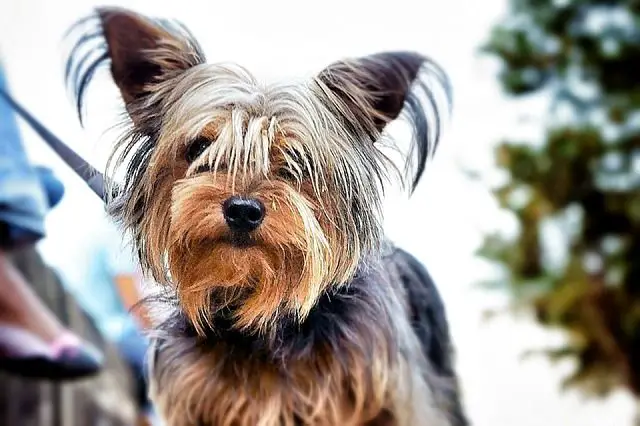
Vital Statistics:
Dog Breed Group– Companion Dogs
Height: 8-9 inches
Weight: 4-6 pounds
Life Span: 12-15 years
Personality
Yorkies are reliable watchdogs and make for great companions. They are very social and love interacting with people and other pets alike. No wonder then that “Happy”, “Rosy” and “Honey” are common names for teacup yorkies.
Forever attentive and ready to bark, Yorkies are known to be fiercely loyal and enjoy spending time with their owners. This also means that you need to prepare yourself to have him as your permanent companion, regardless of where you go. However, the good news is that they’re gentle, adorable and amenable to training.
Grooming & Care
The Yorkie has a long, silky and perfectly straight coat that sheds very little. Whether your Yorkie has a soft coat or a silky one, it needs regular grooming. Even if you trim his coat short, you still need to brush it daily, and bathe it weekly to prevent mats and keep it shiny and clean. There is no need to rub the coat while bathing. After applying the shampoo, just run your fingers through his coat to brush out the dirt. While brushing, always give his coat a spray of a light conditioner. Never brush a dry/dirty coat else you’ll break the hair.
Yorkshire Terriers, like other small breeds, are prone to dental issues. Therefore, to make sure your little one doesn’t loose his teeth early, you have to brush his teeth on a regular basis.
Additionally, check his ears regularly. If you find hair in the ear canal, uproot it with tweezers gently.
Trim his nails after every bath to prevent painful tears. You’ll know his nails have grown when he produces a characteristic clicking sound while walking on the floor.
As a part of his grooming process, ensure to trim the unwanted hair around his anal area.
Yorkshire Terriers love walking or playing with you outside. However, since they are quite active indoors, it doesn’t take much effort to keep them fit and healthy. They don’t respond to extremes of temperature very well, so you may consider paper-training your Yorkie to keep him indoors when the mercury rises or dips too much.
Health
Yorkies have a delicate structure built of fragile bones. Therefore, you need to take extra care to prevent them from falling, else they can end up with a fractured paw. Another useful thing to know is that they don’t tolerate anesthesia very well since it causes organ failure and subsequent death. Being a small breed, Yorkies are often tormented with hypoglycemia. However, you can prevent this by providing a healthy and balanced diet.
Another life-threatening problem is trachea collapse. The best way to prevent this is by using a harness instead of collars for grooming your hyperactive dog.
Liver shunt is a common genetic disorder that affects Yorkies. Then again, this condition can be treated if the symptoms are noted on time. Check for the following: awkward behavior, sudden seizures and poor muscle development.
Temperament
Adorable and gentle as they are, young Yorkies need proper training in order to mature into a well-bred, house-trained dog. Untrained Yorkies are extremely naughty and even bite children. A great tip would be to praise your little dog during obedience training. This breed laps up praise like no other.
Being hyperactive, these dogs require time to get accustomed to the owner and his house. It is not uncommon to wake up one morning and find chewed up computer wires or shredded carpet fibers. Yorkies are commonly afflicted with separation anxiety, and this can cause them immense frustration. In order to gain their owner’s attention, they often resort to barking, or nibbling at the potted houseplants.
As a result, you’ll need to make sure that you spend enough time with him daily, and never leave him alone.
Yorkie-lovers often end up confused over the popular question, “where can I buy a teacup yorkie?” While pet stores may offer a cheap yorkie puppy price, you should think about adoption as a way out. If you wish to adopt, always do so from certified Yorkie poo breeders.
#5 – TOY POODLES
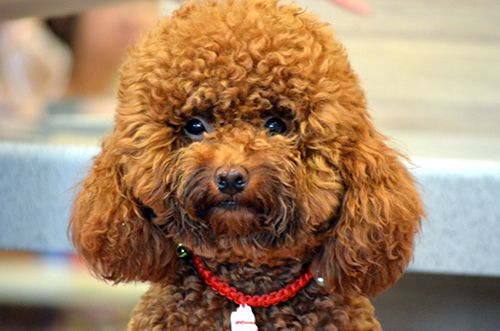
Vital Statistics:
Dog Breed Group: Companion Dogs
Height: 1 foot-10 inches
Weight: 45-70 pounds
Life Span: 12-15 years
Personality
Toy poodles are best recognized as show dogs, taking away all the points for their impressive hairdo, regal attitude and an astonishing, human-like intelligence. As pets too, they can be extremely rewarding.
Toy poodles reward their owners with the gift of fierce loyalty and an undying devotion. Despite their tiny size and fragile structure, they can be great alarms when there’s someone at the door or if the neighbor’s cat crosses your yard. While they are notorious for being lazy, they are extremely smart and need to know a person well before being friendly.
With that said, they are unusually fond of people and love pleasing others with their antics and eyes.
Grooming & Care
The Poodle is a breed that doesn’t shed. Thus it is a great choice of pet for people with allergies. Poodles are high-maintenance dogs. You have to groom him every three weeks and sometimes more often, to keep his coat clean, shiny and thick. In fact, the upkeep of the coat forms a sizable portion of the monthly expense of owning a Poodle. Then again, many owners choose to simply shave off the coat. With that said, even with the coat clipped short, your Toy Poodle will need bathing and brushing every six weeks.
Because this breed doesn’t really shed, the loose hair builds up in the coat and if you slack off with the brushing, this hair will mat very fast.
Many Poodles tend to get the area under their eyes stained. To prevent staining, make sure to wipe his face and specifically, the area underneath his eyes every day with a soft cloth dampened with warm water.
Ensure to monitor your Poodle’s ears for dirt, redness or stale odor. Wipe his ears weekly with a washcloth dipped in pH-balanced ear cleaner. Also, pluck out any hair that grows in his ear canal.
Like the other teacup dog breeds, Poodles are quite prone to dental ailments. You can prevent this however, by brushing his teeth twice a week. This keeps tartar, bacteria and bad breath at bay
Health
At a weight of just 8 pounds, Toy Poodles are very small and have frail bones. Therefore, a wee bit of mishandling can lead to fractured paws. Just like in the case of other toy dogs, hypoglycemia is a common medical issues with this breed. Entropion, trichiasis and cataracts are three major eye problems that can lead to aggressive behavior in Toy Poodles. Fortunately though, these can be corrected through surgery. Kidney stones often accumulate at a later age, leading to unpleasant symptoms like restlessness, vomiting and bloody urine.
Temperament
Toy Poodles are intelligent and playful animals. They are quick to adapt and remember both good habits and bad. Your young Toy Poodle is like soft clay; Its up to how you shape it. In order to keep his mind active and that infinite energy channelized in the constructive ventures, obedience training is a must. A Poodle who is trained, isn’t bored, and thus, won’t have to resort to destructive activities to occupy himself.
It is also important to socialize him from a young age, so that he doesn’t get all snappy and timid in front of other pets and people later on. Although Poodles are highly trainable, owners should never shout or exhibit violence during the training session. With time, treats, and training, your Poodle will find it easy to master new tricks.
Teacup poodles for sale are available across many pet stores. However, it is important to check their health and weight before buying one.
#6 – POMERIAN

Vital Statistics:
Dog Breed Type: Companion Dogs
Height: 7 inches-1 foot
Weight: 4-7 pounds
Life Span: 12-16 years
Personality
Pomerians are loyal and active dogs. Although they weigh no more than seven pounds, their “larger than life” personality makes them excellent as watchdogs.
They are adorable and willing to go to any extent for their beloved owner. As they are quite curious, it’s a good idea to keep them away from brittle household items. Being extroverted and smart, Pomerians love meeting new people. Young Pomerians need to be taught to stop barking on command, else they can just go on all day long.
Pomchis are a hybrid of the Chihuahua and the Pomerian. You can get teacup pomchi puppies for sale in the same pet store that offers micro teacup pomeranian for sale. It is also possible to buy teacup pomerian by comparing the prices offered by several retailers.
Grooming & Care
As with every other dog, brushing and bathing are important aspects of grooming the Pom dog. Use a wire slicker brush or a metal comb to brush his coat. It is important to trim his coat for neatness, specifically on his feet, around his face, ears and anus.
Use a mild dog shampoo and a light conditioner for bathing him. If he gets smelly between baths, consider sprinkling some baby powder on his coat before brushing it out thoroughly. Other grooming needs include nail care and dental hygiene.
Brush his teeth once a week or daily to keep bacterial infections at bay. Additionally, trim his nails regularly. Short, neatly trimmed nails will prevent your legs from getting scratched when he jumps up enthusiastically to greet you.
Health
A common health issue of this particular breed is hip dysplasia. While this is a genetic condition and you can’t do much to prevent it, there still are medications to help your pet cope up with the symptoms better. Monitor your Pomerian for walking difficulties and take him to the vet immediately if the same occurs.
Another problem with this breed is a voracious appetite. Pomerians have an innate eating disorder and tend to get overweight as a result. Therefore, as an owner, it’s essential that you limit his treats, set up regular meal timings, and give him his due exercise.
Temperament
The temperament of a Pomerian is affected by multiple factors like training, heredity, as well as socialization. Puppies with amiable temperaments are inquisitive and playful, while those that are shy or aggressive need a little more exposure to humans before they can get comfortable. Your young Pomerian needs early socialization to mature into a well-bred adult that is not scared of exploring the world around.
Consider enrolling him in a puppy kindergarten course for a great start. Additionally, take him for regular walks and invite visitors to pat him.
#7 – SHIH-TZU

Vital Statistics:
Dog Breed Type: Companion dogs
Height: 9-10 inches
Weight: 10-16 pounds
Life Span: 11-16 years
Personality
The Shih Tzu is a loving, gentle and docile dog breed who loves nothing better than following his owner from room to room. His favorite resting place is your lap, so don’t expect him to chase cats, hunt and fetch game. Bred solely to act as a companion, he is affectionate, cherubic and outgoing. With proper training, the Shih Tzu performs surprisingly well in dog sports and agility competitions. He is alert, lively and loves barking at his guests. However, he is quick to make friends too.
Grooming & Care
The gorgeous coat of Shih Tzu demands regular grooming. Daily brushing and weekly bathing is necessary to prevent tangles. It is a good idea to hire a professional groomer for clipping his long locks short.
The nails should be trimmed monthly, and you should check his ears every week for signs of infection. Wipe his ears gently with a cotton ball dipped in pH-balanced ear cleaner.
The Shih Tzu’s face gets dirty after eating and thus needs daily care. Even his eyes tear up readily, so you should wipe his face softly with a washcloth dampened with warm water.
Most small breeds are susceptible to dental ailments and the Shih Tzu isn’t any exception. Regular brushing with canine-grade toothpaste and a soft toothbrush will keep his teeth healthy.
Health
Shih-Tzu, being a delicate toy pet, can suffer from serious health issues.
Breathing difficulty, flea infestation and dry skin are some of them. His flat face makes him susceptible to heat. Therefore, it is absolutely forbidden to leave him alone in the car with the windows locked. Regular grooming is mandatory to prevent allergies and tick bites.
Another medical condition common to this breed is cherry eyes. Thankfully, this is easy to spot and with medication or surgical intervention, it can be treated.
Hip dysplasia is another genetic illness that may lead to arthritis if not treated on time. Patellar luxation can also occur when displaced knees go untended for a long period of time.
Temperament
Shih Tzus, in general, have a nice temperament, and are easy to manage as pets. However, they are difficult to housebreak, and it is advisable to crate train puppies before letting them roam around the house unsupervised. In spite of being docile and friendly, the Shih Tzu requires socialization from an early age, otherwise he can become timid and anxious of strangers around.
While they are good with children, they are not the ideal choice for families with toddlers. This is because their tiny size puts them at risk for unforeseen injury. The Shih Tzu is extremely prone to coprophagia and the best way to prevent this from becoming it a habit is by cleaning away his feces right away.
#8 – PEEKAPOO

Vital Statistics:
Dog Breed Type: Hybrid dogs
Height: Almost 11 inches
Weight: 4-20 pounds
Life Span: 10-15 years
Personality
Peekapoo is a hybrid dog produced by the mating of a Miniature Poodle with a Pekingese.
Peekapoos are affectionate companion dogs who love staying perched on their owner’s lap. They are terribly loyal and can be very protective of people they love.
Ideal as a lapdog, the Peekapoo loves taking part in family activities. Gentle and rarely combative, he is intelligent and craves for company.
The Peekapoo loves staying outdoors too. Protective of his family, he can go to any extent to defend them from “intruders”.
Grooming & Care
A Peekapoo’s coat has a soft texture and feels almost cottony. As there is no undercoat, shedding may occur, though to a low degree. The fine coat demands regular grooming to stay clean and free of tangles. It is also important to keep the area around the eyes, nose, ears and the muzzle clean and free of debris. While the coat may be clipped for easy care, he still needs regular brushing and weekly bathing.
Additionally, considerable attention should be given to his nails and teeth. Daily brushing of teeth with canine-grade toothpaste can greatly preclude dental issues common to this breed.
The Peekapoo should be raised in an air-conditioned environment as he’s prone to heat exhaustion. Also, it’s important not to over-exercise him and limit training sessions to 10 minutes only.
Health
While Peekapoos are in general healthy, they still are prone to a number of health problems common to teacup dog breeds. Patellar luxation can occur if the knee gets displaced and may result in excruciating joint pain and difficulty in walking. Peekapoos born with hip dysplasia may develop arthritis as they age. By rule of thumb, Peekapoos with hip dysplasia shouldn’t be bred.
Temperament
The temperament of a Peekapoo is influenced by factors like heredity and training. Socialization plays an important role too. Being a small breed, it isn’t easy to house train them. Therefore, crate training should be done at an early age to ensure that he doesn’t bump into things he shouldn’t or face untoward accidents. Because he is naturally suspicious of guests and animals, socialization is a must for every Peekapoo.
This is a high-energy dog that needs proper training and adequate exercise to stay away from destructive activities. Peekapoo puppies tend to suffer from separation anxiety when neglected for long periods of time.
#9 – PAPILLON

Vital Statistics:
Dog Breed Type: Companion dogs
Height: 8-11 inches
Weight: 5-9 pounds
Life Span: 12-16 years
Personality
The Papillon is a happy, friendly and alert dog breed. Ideally, he is never shy or aggressive. He is brimming with energy and loves watching out for plausible intruders.
Papillons are highly receptive to training and quick to learn new tricks. They are remarkably active and perform wonderfully in competitions of agility and obedience. His sparkling personality attracts people to him like a magnet!
Grooming & Care
The Papillon’s coat is long and silky, and devoid of an undercoat. Although it isn’t prone to matting, it should be brushed twice a week to ensure adequate distribution of the natural skin oils that keep the hair shiny and healthy. Since the Papillon lacks the typical dog odor, you can bathe him only when needed.
However, make sure to trim his nails at least thrice a month. You’ll know they have grown if he produces a clicking sound while walking on the floor. Small Papillons are susceptible to peridontal disease. Therefore, you need to introduce dental hygiene at an early age. Brush his teeth daily if possible to keep them clean and free of tartar.
Health
A typical health issue is hypoglycemia, which arises due to aberrant control of blood glucose levels. Joint issues additionally happen as often as possible. Patella luxation is a condition that impacts the knee, causing it to get displaced. Progressive Retinal Atrophy is an infection that prompts visual deficiency. This is hereditary and, sadly, there is no real treatment.
Liver shunt is condition common to this breed. Whenever you see side effects like inability to walk or lethargy, you should take him to the vet quickly. The teeth and gums can be delicate too, so cleaning is required all the time
Temperament
Papillons,in general, are always brimming with energy and happiness. They are easily one of the best teacup dogs. However, some puppies can be nervous and timid. A combination of training, socialization, and positive reinforcements like treats and praises, can be successful in making them extroverted.
Papillons suffer from separation anxiety and as a result, don’t do well in families where there is little time for pets. At the puppy stage, they do not get along with small children, and often get aggressive when the owner neglects them for taking care of the baby. Contrary to other toy dogs, Papillons are easy to house train.
#10 – BOSTON TERRIER
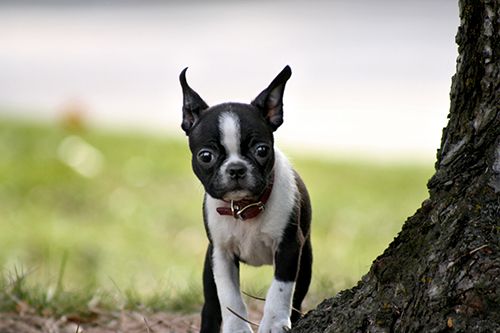
Vital Statistics:
Dog Breed Type: Companion Dogs
Height: 1 foot-3 inches
Weight: 11-25 pounds
Life Span: 13-15 years
Personality
Ever since their creation, Boston Terriers have been a favorite of dog-lovers spanning the globe. While they were originally bred to be hunting/fighting dogs, they serve the purpose of gentle and affection companions today. They are lively, smart and have an even temperament.
However, they can be stubborn at times and it is essential to exercise strict rules while training. They are intelligent and their overly active nature sometimes causes them to engage in spurts of hyperactivity.
Grooming & Care
Boston Terriers are quite easy to groom. All you need to do is brush them with a bristle brush weekly, and bathe them with a powder shampoo and damp cloth. Because their eyes are so prominent, you have to wash their faces daily and even check for signs of redness or irritation in their eyes.
Although this breed does shed, it is minimal and can be controlled by regular brushing. Take care to brush his teeth twice a week. Daily brushing is a mandate if you wish to prevent gum disease and foul breath.
You should also trim his nails twice every month to prevent painful tears.
His ears should be monitored weekly for signs of infections. Additionally, use a damp cotton ball to wipe out his outer ear. This keeps infections at bay.
Health
There are several health hazards that can shorten the life of a Boston Terrier. Joint aches are common with this breed, as are hypoglycemia and lack of energy. Since they have frail bodies, they cannot regulate the blood sugar levels correctly. Uncontrolled shivering is also of common occurrence. Patellar luxation, Perthes syndrome and hip dysplasia are painful joint conditions that often require surgical intervention for cure.
With regular visits to the vet, it may be possible to identify such problems at an earlier stage and nip them in the bud before they get too serious.
Temperament
In general, Boston Terriers have an even temperament. However, they do tend to indulge in destructive activities if untrained or left alone. As fiery and active as they are, Bostons are sensitive of the tone of your voice and severe punishment can make them timid and nervous. Therefore, training should be kept motivational and low-key. It always helps to use positive techniques of reinforcement like rewards, praise and play. This builds trust for their owners and helps them get comfortable in their new home.
CARE for TEACUP DOGS: THINGS to KNOW for NOVICE OWNERS
The fact that the best teacup dog breeds entail high-maintenance must be clear by now. Their small size and frail structure makes them more delicate than the normal dog breed.
At the puppy stage, they just like babies and remain so until they receive a couple of vaccinations.
-It is advisable to keep them in temperature-controlled environments to preclude heat-exhaustion or alternatively, shivering due to cold. They should never be left alone in the car, or out in the heat.
-Small dog breeds are extremely susceptible to allergies and diseases. That is why, it is important to keep them away from crowded places such as dog parks. In general, teacup dog breeds aren’t the best choice for families with toddlers.
-Feeding is another area that deserves special attention. As their belly is tiny, you should feed them small portions of food every 4 hours. Additionally, clean him right after he excretes, or less he may end up feeding on it.
ENDING NOTE…
These best teacup dog breeds are affectionate, loving and ideal as friends for life. With every individual contemplating on owning a dog, the first and foremost question is- Whether to buy or to adopt. Additionally, many people think, “where can I buy a teacup dog“.When it comes to teacup puppies adoption is the best way to go. It is not difficult to find teacup dogs for adoption. To get a healthy puppy, do not buy puppies from irresponsible breeders, puppy mills or non-licensed pet stores. Many animal shelters even give you suggestions on teacup puppy names and teacup dog names.
|
Visit this Dog Website:
|
Make sure to look for a reputable breeder who examines her breeding dogs to ensure they are free of genetic conditions that may be passed onto the puppies.
It is possible to buy cheap teacup puppies by making a comparison of the teacup puppy cost offered by multiple dealers. When it comes to adopting a teacup dog, you have to be ready for unpredictable temperaments. While this may seem taxing initially, training a dog to be gentle and then achieving success at can be rewarding in the long run.

